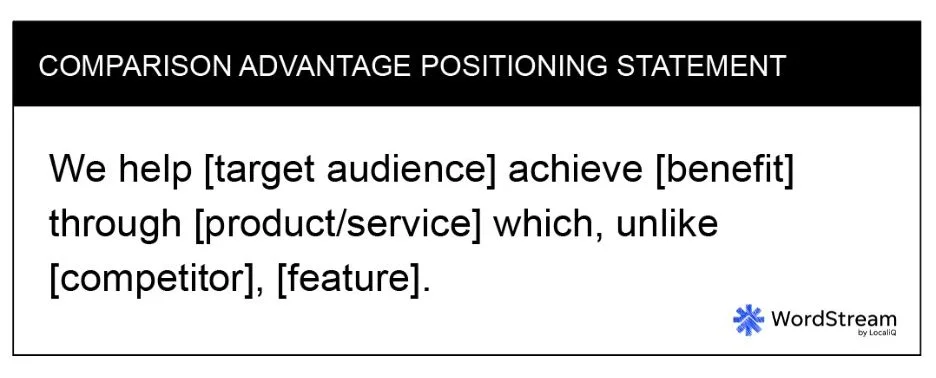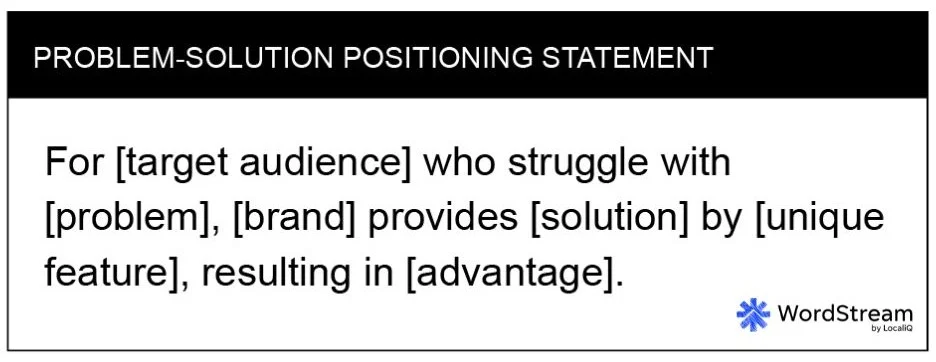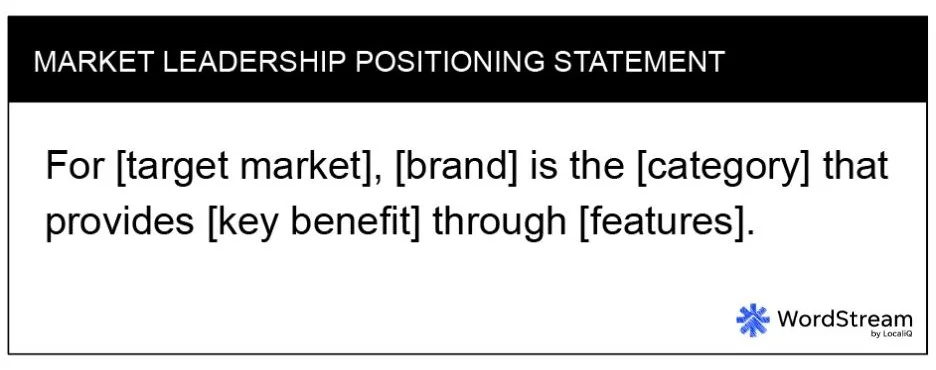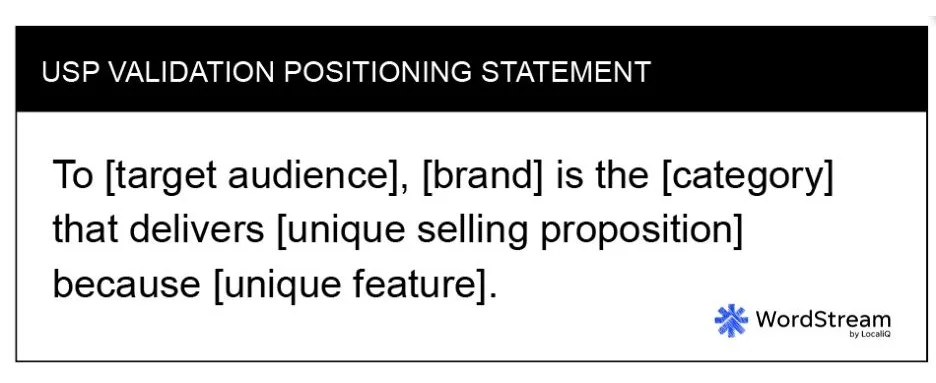You know that one friend who always knows exactly what to say? Positioning statements are sort of like that. They help your brand say the right thing at the right time.
And with these examples and templates, you’ll have everything you need to write a positioning statement that makes your brand’s message clear, confident, and unforgettable.
Let’s get into it, shall we?
Contents
- What is a positioning statement?
- How to write a positioning statement
- Positioning statement templates with examples
- Final tips for crafting an effective positioning statement
What is a positioning statement?
A positioning statement is a way of defining where your brand stands in the market. It consists of your target audience, the problem you solve, your unique value, and other key benefits. It’s different from a mission statement, which describes your overall purpose and values. It’s also different from your unique selling proposition (USP), which focuses solely on what makes you unique.
Your mission statement is more of an internal driver of culture and alignment, while your positioning statement is more of a tactical and external guide for your marketing strategy and messaging.
 Need a little more oomph in your positioning statement? Try the 135 of the Best Words & Phrases for Marketing with Emotion.
Need a little more oomph in your positioning statement? Try the 135 of the Best Words & Phrases for Marketing with Emotion.
How to write a positioning statement
There are different ways to write a positioning statement; you might tweak it depending on where and how it’s used. So the best thing to do is gather all the ingredients first, and then you can mix and match them to your liking.
Here’s what you need:
- Target market: The specific group of customers you aim to serve. These target market examples should help.
- Business/market category: The industry or niche in which your brand operates.
- Key benefits: The primary advantages your product or service offers to customers.
- Key features: The standout characteristics of your product that deliver those benefits.
- Unique selling proposition: This is what sets your brand apart from competitors. It is also known as your unique value proposition.
- Competitors: The main rivals you’re differentiating your business from—both direct and indirect.
- Distinct advantage: The unique advantage your brand holds over competitors.
 Don’t have a unique value proposition yet? Download How to Create a Unique Value Proposition From the Ground Up.
Don’t have a unique value proposition yet? Download How to Create a Unique Value Proposition From the Ground Up.
Positioning statement templates with examples
Once you have the above elements, you can mix and match them to create positioning statements using the formulas below.
Benefit-feature positioning statement template
[Brand] offers [target audience] a [key benefit] by providing [unique product/service feature] in [category].

Examples
Note that these are hypothetical examples, not the brands’ official positioning statements.
- Zoom offers remote teams seamless communication by providing the most reliable and user-friendly virtual meeting experiences in video communications.
- Roto-Rooter offers homeowners and businesses peace of mind by providing 24/7 emergency services and the most highly trained plumbing and drain cleaning technicians.
- Metagenics offers health-conscious individuals and practitioners a personalized approach to wellness by providing high-quality, science-based nutritional supplements in the functional medicine and nutrition category.
When to use:
- New product launch in a competitive market
- Product descriptions for ecommerce
- Business descriptions in listings and social bios and profiles
- Marketing materials for trade shows
Competitor differentiation positioning statement template
Unlike [competitor], [brand] offers [target market] [distinct advantage], resulting in [specific benefit].

Examples
Note that these are hypothetical examples, not the brands’ official positioning statements.
- Unlike traditional vacuum cleaners, Dyson offers homeowners advanced cyclone technology, resulting in more powerful suction and a cleaner home.
- Unlike traditional renovation services, Bath Fitter offers homeowners and renters a quick and cost-effective bathroom remodeling solution, resulting in a transformed bathroom without the mess and hassle of a full renovation.
- Unlike generic photo printing services, Shutterfly offers families and creative individuals a personalized photo gift and keepsake experience, resulting in treasured, high-quality photo products that capture life’s memories.
When to use:
- When brainstorming ad copy
- For competitive advertising campaigns
- Investor or partner pitches
- To guide battle card creation
Comparison advantage positioning statement template
We help [target audience] achieve [benefit] through [product/service] which, unlike [competitor].

Examples
Note that these are hypothetical examples, not the brands’ official positioning statements.
- We help small business owners achieve professional marketing results through Canva which, unlike expensive design agencies, provides easy-to-use templates and tools.
- We help small businesses and startups achieve easy, automated payroll, benefits management, and HR solutions through an all-in-one platform which, unlike traditional payroll services, is user-friendly, scalable, and built for modern teams.
- We help people seeking stress relief and wellness achieve a balanced mind and body through affordable massage therapy and wellness services which, unlike independent spas, provide flexible membership options, nationwide locations, and consistent quality.
- We help individuals and businesses achieve financial stability and growth through a wide range of banking, lending, and investment products which, unlike smaller banks or credit unions, provides extensive digital tools, a vast network of ATMs, and comprehensive customer support.
When to use:
- Case studies demonstrating results
- Addressing sales objections
- Sales copy for product comparisons
Problem-solution positioning
For [target audience] who struggle with [problem], [brand/product] provides [solution] by [unique feature], resulting in [specific benefit].

Examples
Note that these are hypothetical examples, not the brands’ official positioning statements.
- For remote teams that struggle with disorganized communication, Slack provides a centralized platform with organized channels and integrations, resulting in more efficient and focused collaboration.
- For homeowners who struggle with managing home security and automation, Vivint provides a comprehensive smart home solution by offering integrated security systems, smart thermostats, and automated lighting, resulting in enhanced safety, energy efficiency, and convenience.
- For busy individuals who struggle with finding reliable help for everyday tasks, TaskRabbit provides a flexible service platform by connecting users with local, vetted professionals for tasks like cleaning, moving, and repairs, resulting in time savings and peace of mind.
- For growing businesses that struggle with traditional banking and credit limitations, Brex provides an all-in-one financial solution by offering corporate cards, expense management, and business account services with no personal guarantees, resulting in greater financial flexibility and streamlined business operations.
When to use:
- Niche market product launches
- Digital ads targeting specific pain points
- Landing page content for lead generation
- Business descriptions and bios
5. Market leadership positioning statement template
For [target market], [brand] is the [category] that provides [key benefit] with/because of/through [features].

Examples
Note that these are hypothetical examples, not the brands’ official positioning statements.
- For busy professionals, Trello is the project management tool that provides simple, flexible collaboration with an intuitive drag-and-drop interface and integrations with key business tools.
- For health-conscious shoppers, Whole Foods is the grocery store that provides high-quality, organic, and natural products through its commitment to sustainability and promoting healthier lifestyles.
- For busy pet owners, Rover is the pet care platform that provides reliable pet sitting and dog walking services, connecting you with trusted, local caregivers who care for your pets like family.
When to use:
- Rebranding or repositioning
- Thought leadership content
- Investor presentations
6. USP validation positioning statement template
To [target audience], [brand/product] is the [market category] that delivers [unique selling proposition] because [supporting evidence].

Examples
Note that these are hypothetical examples, not the brands’ official positioning statements.
- To health-conscious consumers, Kind Bars are the snack bars that deliver a tasty and nutritious option because they’re made with whole ingredients and no artificial additives.
- To pet owners, Chewy is the online pet retailer that delivers fast, reliable, and personalized service with its 24/7 customer support and auto-ship features for pet food and supplies.
- To avid readers, Goodreads is the social book discovery platform that delivers personalized book recommendations and community-driven reviews because of its vast database of books and active user base who share insights and recommendations.
When to use:
- Homepage copy or brand messaging
- Social media content with proof points
- Sales scripts for introductory calls
Final tips for crafting an effective positioning statement
Here are a few last tips to write a great positioning statement:
- Keep it concise: Aim for clarity and brevity. A positioning statement should be one to two sentences, easy to understand, and memorable.
- Focus on your audience: Always prioritize the needs and desires of your target audience. Think personas. Your statement should resonate with them and address their key pain points.
- Be specific: Avoid vague language and (picture me making a gaggy face) generic cliche statements. Clearly spell out the unique features and benefits that set your brand apart from competitors.
- Stay authentic: This is a big one! Make sure your positioning aligns with your brand’s true strengths and core values. Don’t write something just to write it, don’t overpromise or overhype, and definitely don’t misrepresent what you offer.
- Test and refine: Share your positioning statement with coworkers, customers, and partners and ask for feedback. And once you have it just right, be prepared to make adjustments as your business evolves.
Use these examples and templates to write the perfect positioning statement for your business
With the right positioning statement, you can clearly communicate your brand’s unique value and stand out from competitors. Use the examples and templates provided to create a statement that resonates with your target audience and drives your brand forward. A well-crafted positioning statement is a key step toward stronger, more effective marketing.
The post 18 Great Positioning Statement Examples + How to Write One (with Templates) appeared first on WordStream.